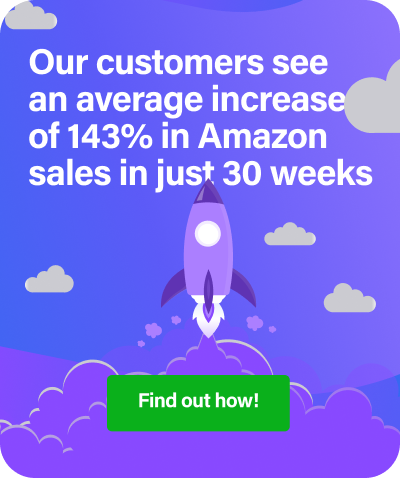Skip McGrath and his wife, Karen, began selling on eBay in 1997 shortly after closing a small antiques shop they operated in New York. In 2006, Skip began selling on Amazon, and last year he was named as one of Amazon’s top 10 sellers for the holiday season.
Today, Skip and Karen list over 900 products on Amazon, alongside their eBay business, which is still going strong. In today’s post, Skip offers three top tips for Amazon sellers to consider before deciding to lower their prices.
1. Check Competitive Sellers’ Feedback Score
I have several products where I experience stiff pricing competition from other sellers. However, when I took time out to check their sellers’ accounts, I noticed their feedback scores were often as low as 90%. Whereas, my feedback rating is 100%.
Amazon usually puts the lowest price seller in the Buy Box, but not if their account metrics are poor.
My process is this—I go through my listings and wherever I see these sellers (with poor metrics) undercutting me, I raise my price. The result, in almost every case, I retain the Buy Box whilst increasing my profit margin.
Therefore, I advise you to do the same. Start by checking all the competitive sellers and check their feedback scores. If they are much lower than yours (note, yours should be at least 98% or higher), then go ahead and raise your price.
After, waiting for a 24-hour period, go back and have a look at who’s occupying the Buy Box. In my experience, over 90% of the time, you’ll be there—even with your higher price!
2. Match the Price of the Lowest Priced FBA Seller
The other factor I consider is fulfilment—whether the seller is FBA or MF. Karen and I are 100% FBA sellers. We no longer sell any Merchant Fulfilled (MF) products.
When I look at my competitive listings I usually find it’s the MF sellers who are undercutting me. Another I tend to notice is that although one or two other FBA sellers may be under pricing me, their prices are usually higher than the MF sellers.
In these case, I match the price of the lowest priced FBA sellers which usually gives me a boost over the MF sellers.
Remember, Amazon has approximately 60 million Prime members. These are people who get free two-day shipping on all their orders. Many of these members will check the Prime Only box when they search on Amazon. When they do this, they only see the Prime-eligible products, products that are in FBA. MF sellers will not even appear in their searches.
Related reading: Pricing Strategies for Amazon Sellers
3. Is the 2% Rule Now the 0.5% Rule?
The other factor I have observed, is that Amazon’s search algorithm tends to favour FBA items regardless of the price. I’ll often find myself in the Buy Box at a slightly higher price just because I am FBA. I honestly don’t know why that is, but I see it all the time and as an FBA seller, l’m not complaining!
Amazon used to have what they called the “2% rule”. This meant that if a product’s price was within 2% of a competitor—Amazon considered it to be essentially the same price, and they would rotate those sellers into and out of the Buy Box. However, they dropped that rule about two years ago.
Today, Amazon still has a percentage pricing rule but its exact details are not known. I find that I can raise my price at least 0.5% above another seller and still get a share of the Buy Box—so I would speculate that the level is somewhere around there.
Final Thoughts
This has also been true on products where I compete with Amazon. If I see Amazon selling an item for $17.69 and I set my price at $17.77, this does not seem to make Amazon trigger a lower price and they allow me to rotate in and out of the Buy Box with them.
In addition to price, Amazon also looks at seller’s reputation. If your account is not in good standing, if you have low star ratings or poor feedback then even though your price is lower, you may not get the Buy Box based on your seller standing and reputation.
Related reading
A Sellers’ Guide to Amazon Feedback Software
How to Compete with Amazon
*A version of this blog originally appeared on SkipMcGrath’s blog
About the author:
 Skip McGrath is a very experienced online seller who runs a great blog full of resources for eBay and Amazon sellers. Sign up for Skip’s newsletter and let him show you how to make money online.
Skip McGrath is a very experienced online seller who runs a great blog full of resources for eBay and Amazon sellers. Sign up for Skip’s newsletter and let him show you how to make money online.


